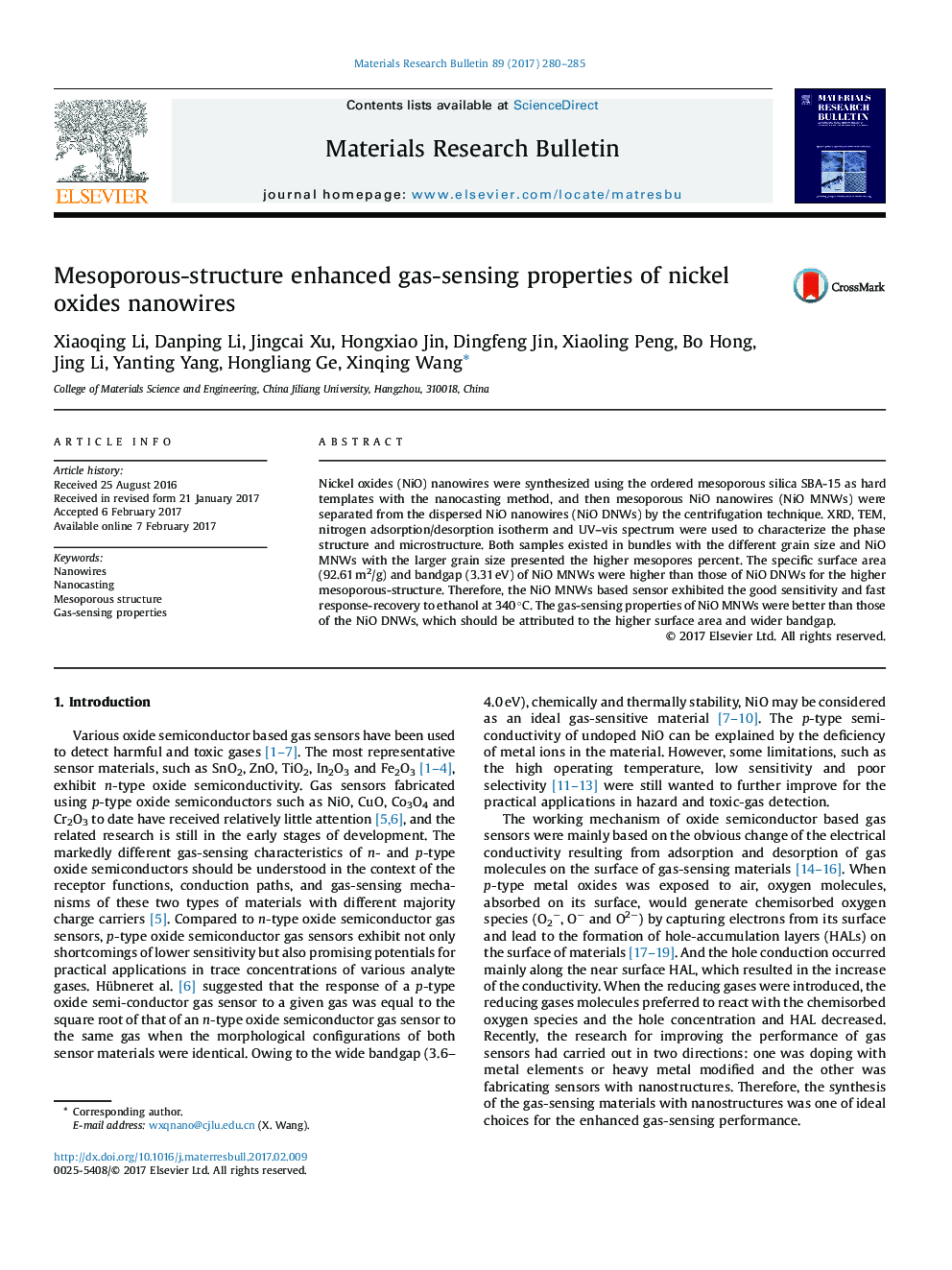| Article ID | Journal | Published Year | Pages | File Type |
|---|---|---|---|---|
| 5442267 | Materials Research Bulletin | 2017 | 6 Pages |
â¢NiO MNWs were separated from NiO DNWs by centrifugation, which were synthesized in the same conditions.â¢NiO MNWs presented the better mesoporous-structure than Ni DNWs.â¢The surface area and bandgap of NiO MNWs were higher than those of NiO DNWs for the mesoporous-structure.â¢NiO MNWs based sensor exhibited the good sensitivity to ethanol than those of the NiO DNWs for the higher surface area and bandgap.
Nickel oxides (NiO) nanowires were synthesized using the ordered mesoporous silica SBA-15 as hard templates with the nanocasting method, and then mesoporous NiO nanowires (NiO MNWs) were separated from the dispersed NiO nanowires (NiO DNWs) by the centrifugation technique. XRD, TEM, nitrogen adsorption/desorption isotherm and UV-vis spectrum were used to characterize the phase structure and microstructure. Both samples existed in bundles with the different grain size and NiO MNWs with the larger grain size presented the higher mesopores percent. The specific surface area (92.61 m2/g) and bandgap (3.31 eV) of NiO MNWs were higher than those of NiO DNWs for the higher mesoporous-structure. Therefore, the NiO MNWs based sensor exhibited the good sensitivity and fast response-recovery to ethanol at 340 °C. The gas-sensing properties of NiO MNWs were better than those of the NiO DNWs, which should be attributed to the higher surface area and wider bandgap.
Graphical abstractDownload high-res image (68KB)Download full-size image
